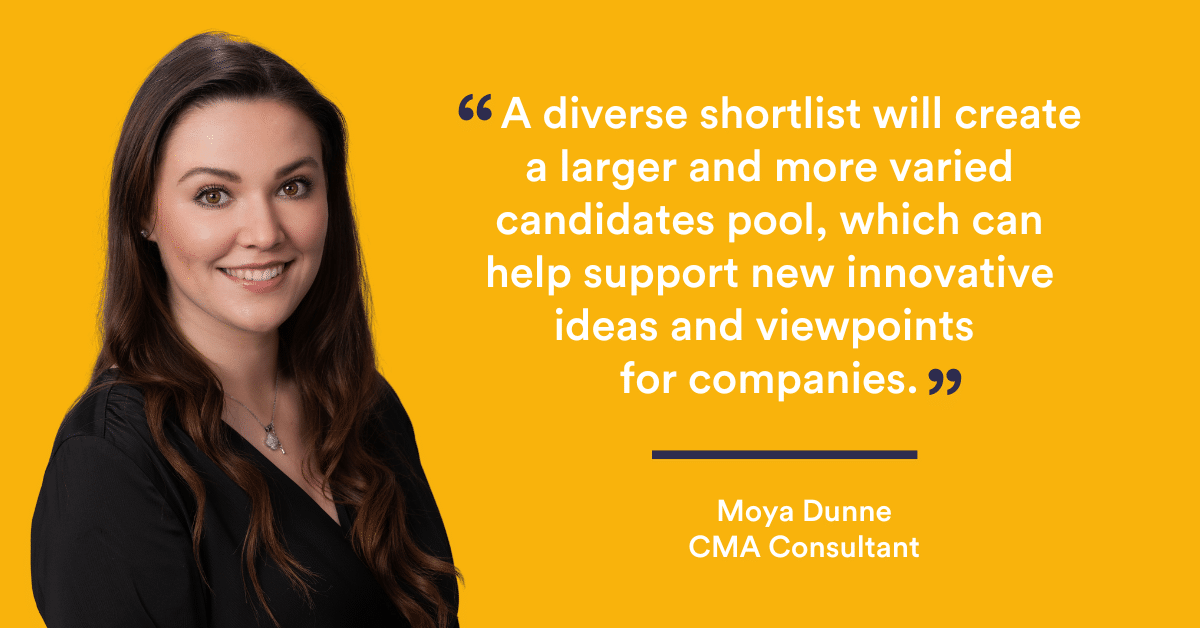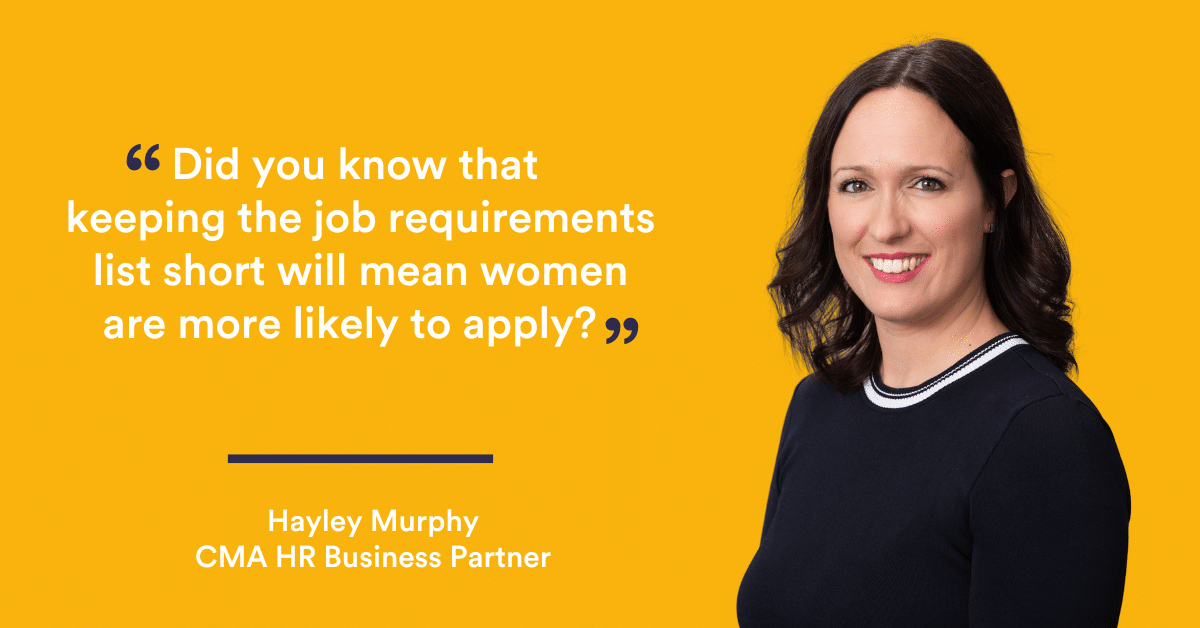How to Create Diverse Shortlists
As many organisations actively strive to balance their workforces and create more diverse and inclusive workplaces, the need for creating diverse shortlists when hiring becomes absolutely paramount.
Here we explain how hiring managers can ensure they have a diverse hiring strategy and inclusivity within their organisation by optimising their shortlists. We hear from CMA’s own Diversity & Inclusion working group who provide expert advice for creating diverse shortlists and making big steps in your own organisation’s diversity programme.
What does a diverse workplace look like?
Before we talk more on creating diverse shortlists, it’s important to take a moment to define what a diverse workplace looks like. CMA’s HR Business Partner Hayley Murphy says: “Diversity in the workplace is where a group of individuals who have different backgrounds and skills come together as a team to achieve business goals.
“Their backgrounds will differ in terms of age, nationality, ethnicity, religion, ability, personal history, gender, skills, political preferences, education, sexual orientation, spiritual beliefs, disability, or socioeconomic status. Inclusivity goes a step further and ensures employees feel valued and accepted within the organisation, without having to conform.”
Businesses which are inclusive support their employees, from all backgrounds, to succeed at work.
What is a diverse shortlist?
All of this begins with a solid diversity and inclusion programme and a key part of this is ensuring a diverse hiring process – and this means a shortlist which is free of bias. Hiring managers should be mindful of potential evaluation biases when drawing up candidate shortlists for roles.
Diverse hiring means hiring the best candidate for the job, irrespective of their gender, ethnicity – or any other characteristics that are unrelated to their performance in the job.
Why is it important for hiring managers to create diverse shortlists?
Diverse teams enable different perspectives, engendering out-of-the-box thinking and fostering positive relationships and communications. CMA Consultant and Diversity & Inclusion group member Danielle-Jade Neil explains: “By having diverse shortlists you are more likely to recruit a varied range of skills into your team, bringing different skillsets and perspectives.”
What’s more, it has been proven that businesses with a more diverse workforce achieve better business performance. Hayley expands: “This has been especially highlighted during recovery from covid, whereby businesses who maintained a focus on Equality, Diversity & Inclusion (ED&I) were generally able to emerge in a stronger position.”
We have seen many examples where having a diverse workforce has increased business productivity, which has improved sales revenues. In fact, according to research by McKinsey, businesses with ethnic diversity in their leadership teams are achieving a 36% better financial performance on average than those without representation from diverse groups.
Moya Dunne is also a part of the CMA D&I team, she sums it up nicely: “A diverse shortlist will create a larger and more varied candidate pool, which can help support new innovative ideas and viewpoints for companies.”
Reducing gender bias in hiring
As we’ve demonstrated above, diversity equals success. According to McKinsey, businesses with a balance of genders in their leadership teams are achieving a 25% greater financial performance on average than those with poor female representation.
Gender bias has come a long way; according to CIPD the gap between female and male employment rates in the UK is the lowest since it was first recorded in 1971, meaning the UK workforce is more gender-diverse than ever. However, there is still much work to be done, especially in high-level roles and workplace progression.
There are many steps you can take as a hiring manager to reduce gender bias in hiring, and increase gender diversity within your shortlists. Even small nuances in job description wording can have an impact – for example, Hayley says: “Did you know that keeping the job requirements list short will mean women are more likely to apply?”
Working with your recruiter will also have its benefits. Senior Consultant Michelle Peña-Stapleton advises: “When requesting CVs, ask your recruiter to omit any reference to gender, sex, race or religion. You could ask them to use reference numbers on CVs instead of names.”
How do you create a diverse pipeline?
Before you begin building a diverse pool of talent, you first need to look at your hiring strategies, ensuring they are in-line with your organisation’s goals and company culture. Once these things are in place you are ideally-placed to begin your sourcing. Everything from the wording of the job description to the images used alongside it will affect who you attract as a candidate. Where you advertise the role and who you target will also be essential.
So how can we as a recruitment consultancy help? Your recruiter will be able to assist you with the first step of attracting diverse candidates and providing a representative shortlist – as well as with the many important touch-points throughout the hiring process. Here are some of the ways we aid clients in creating diverse shortlists:
- Ensuring our adverts use unbiased language, are impactful and focused on the outcomes of roles to attract diverse candidates
- We can advise clients on best practice recruitment processes – ensuring all candidates have equal opportunities and are not disadvantaged (e.g. any testing is completed in a controlled environment or being aware of ‘digital poverty’ with disadvantaged groups)
- Our comprehensive events calendar can help with bringing a diverse pipeline of candidates, for example events such as our popular Future CFO Club
- Targeting referrals from our diverse candidates
- Using the data at our fingertips to provide specific insights for clients using our Customer Relationship Management system
- Drawing on multiple members of the recruitment team to review shortlists to eliminate any unconscious bias
- Anonymising CVs to remove gender, language, age, location and qualifications to aid with the removal of bias from CV reviews
Here at CMA we believe collaboration is key and we pride ourselves on being inclusive and considerate.
When focusing on creating diverse shortlists and looking at ways to remove bias in your recruitment, all of the tips above will assist you with this aim. However, a focus on diverse hiring is not enough, as Hayley says: “What makes a difference is the experience employees have in the workplace. Policies, practices and workplace culture are important in creating equity and inclusivity within an organisation.”



